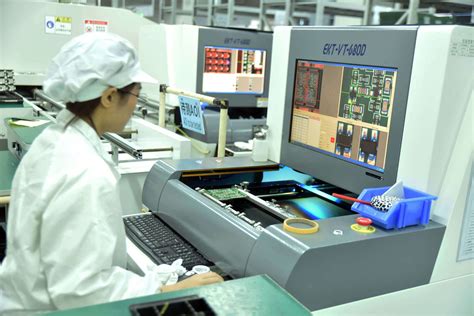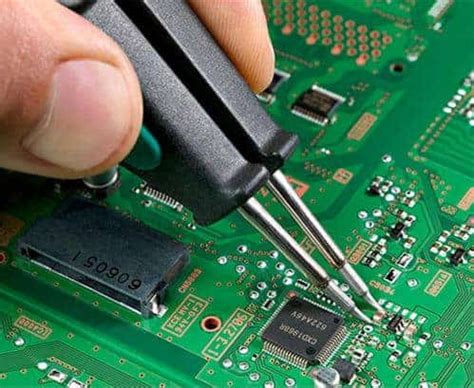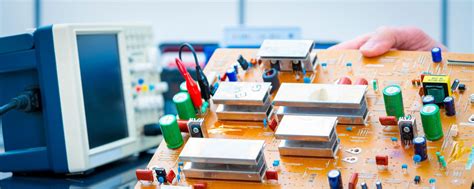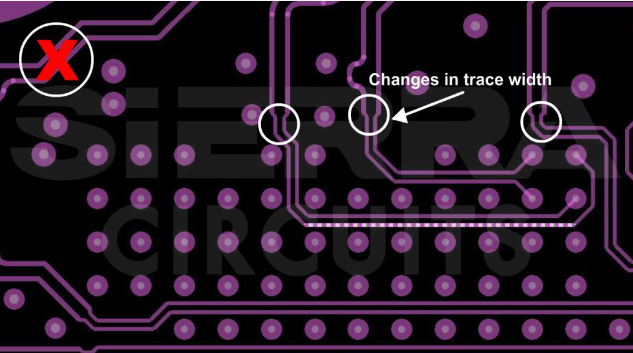Leading PCB Prototype Solutions for Precision Assembly

Key Takeaways
When evaluating PCB manufacturing companies, consider how they balance cost-efficiency with precision assembly capabilities. While PCB manufacturing cost often drives decision-making, prioritizing quality ensures reliable prototypes—especially for complex components like tiny pitch connectors. Here’s how to navigate critical factors:
| Priority | Consideration | Example |
|---|---|---|
| Cost vs. Quality | Compare material grades and tolerances | FR-4 vs. high-frequency laminates |
| Turnaround Time | Align deadlines with production capacity | 24-hour vs. 5-day services |
| Component Sourcing | Verify supplier partnerships | DigiKey integration for BOM fulfillment |
Tip: Always request a Design for Manufacturability (DFM) report to identify potential bottlenecks in PCB manufacturing business workflows before committing.
For projects requiring rapid turnaround, confirm whether the manufacturer uses automated optical inspection (AOI) to maintain quality at scale. Budget-conscious teams can achieve affordable prototyping under $5 per board by optimizing panelization or selecting standard finishes. However, avoid sacrificing critical specs—like impedance control—to cut PCB manufacturing cost.
When sourcing components, prioritize suppliers with traceable certifications to reduce assembly errors. For example, DigiKey guarantees authentic parts, minimizing delays from counterfeit materials. Finally, assess a company’s expertise in high-density interconnects (HDIs) if your design includes microvias or stacked layers.
By aligning your priorities with a manufacturer’s strengths, you’ll streamline prototyping while mitigating risks in PCB manufacturing.

PCB Prototype Cost vs Quality Comparison
When evaluating PCB manufacturing options, balancing pcb manufacturing cost with quality expectations is critical. Lower-cost services might use thinner copper layers or standard FR-4 materials, which work for simple designs but risk reliability in complex circuits. Conversely, premium pcb manufacturing companies often invest in advanced processes—like laser-drilled vias or high-frequency laminates—to ensure signal integrity, though this raises per-board expenses.
Your project’s requirements dictate where to compromise. For instance, tight-tolerance designs (https://www.andwinpcba.com).
Volume also plays a role: small batches (under 10 units) often prioritize speed over cost optimization, while larger runs benefit from economies of scale. Always request detailed breakdowns of material grades, testing protocols, and turnaround tiers. By aligning your priorities—whether rapid iteration or long-term reliability—you’ll make informed decisions that harmonize budget constraints with technical demands.
Precision Assembly for Complex Components
When working with intricate designs requiring ultra-fine pitch components or high-density interconnects, precision assembly becomes non-negotiable. Modern PCB manufacturing relies on advanced techniques like laser drilling and automated optical inspection (AOI) to ensure micron-level accuracy, especially for multi-layer boards or designs with embedded components. Leading PCB manufacturing companies leverage specialized equipment, such as pick-and-place machines with vision systems, to handle components as small as 01005 packages or BGAs with pitches under 0.4mm.
However, balancing PCB manufacturing cost with precision demands careful planning. For instance, opting for higher-grade substrates or tighter tolerances might increase expenses, but it reduces the risk of rework in later stages. To optimize budgets, prioritize manufacturers offering scalable solutions—those capable of adjusting processes based on project complexity. This approach is particularly critical for startups in the PCB manufacturing business, where prototyping costs directly impact R&D timelines.
When sourcing services, verify if suppliers adhere to IPC-A-610 standards for Class 3 assemblies, which govern reliability for mission-critical applications. Additionally, confirm their ability to manage mixed-technology assemblies (e.g., combining SMT and through-hole components) without compromising turnaround times. By aligning these factors, you ensure that precision doesn’t come at the expense of scalability or affordability.

Rapid Turnaround PCB Service Benchmarks
When evaluating PCB manufacturing companies for rapid prototyping, you’ll find that leading providers typically offer 24-48-hour turnaround times for standard designs. These benchmarks are critical for projects requiring iterative testing or tight deadlines, but design complexity and layer count can extend timelines. For instance, boards with high-density interconnects (HDIs) or specialized materials may demand additional processing steps, impacting both PCB manufacturing cost and delivery speed.
To optimize turnaround, prioritize vendors with automated production lines and streamlined workflows. Many PCB manufacturing leaders leverage advanced machinery to reduce manual interventions, ensuring faster processing without compromising precision. However, balancing speed and affordability requires careful planning—opting for “panelization” (grouping multiple designs on a single panel) can lower per-unit costs but may delay delivery if revisions are needed.
Meanwhile, PCB manufacturing business models often tier pricing based on urgency. For example, expedited services might add 20-30% to baseline fees, while standard timelines keep budgets predictable. Always verify if quoted timelines include assembly and testing phases, as some providers separate these steps. This becomes particularly critical when sourcing components from partners like DigiKey, where lead times for rare parts could bottleneck the entire process. By aligning your design requirements with a manufacturer’s capacity, you avoid costly delays while maintaining quality thresholds.
Affordable Prototyping Under $5 per Board
When sourcing PCB manufacturing services for prototypes, balancing affordability with reliability is critical. Many PCB manufacturing companies now offer base pricing below $5 per board, particularly for simpler designs with standard materials and 2-4 layers. To achieve this, you’ll need to optimize design choices—such as avoiding exotic substrates or ultra-tight tolerances—while leveraging bulk-order discounts for larger quantities. However, PCB manufacturing cost escalates with advanced features like HDI routing or impedance control, so clarify your project’s non-negotiable specs early.
Reputable suppliers often provide tiered pricing models, allowing you to scale production without overspending. For instance, ordering 10–50 units might keep per-board costs under $5, but verify if this includes essential testing like electrical verification or AOI inspection. Some providers bundle these services, while others treat them as add-ons. Additionally, consider how PCB manufacturing business partnerships impact long-term scalability—consistent quality at lower costs hinges on transparent communication and iterative feedback.
By aligning your prototype’s complexity with budget constraints, you can secure cost-effective solutions without compromising foundational performance. This approach ensures smoother transitions to full-scale production while maintaining financial flexibility.
Balancing Speed and Quality in PCB Production
When optimizing your PCB manufacturing workflow, reconciling rapid turnaround with consistent quality remains a critical challenge. Leading PCB manufacturing companies achieve this balance by integrating advanced fabrication techniques with stringent testing protocols. For complex projects requiring precision assembly, automated optical inspection (AOI) systems and controlled impedance testing help maintain reliability without sacrificing production speed. However, accelerating timelines often impacts PCB manufacturing cost, particularly when dealing with high-density interconnects or specialized materials.
To mitigate delays, prioritize manufacturers offering design-for-manufacturability (DFM) feedback early in the process. This preemptive step reduces iterative revisions, ensuring faster time-to-market. While lower-cost options might seem appealing, compromising on quality checks—like skipping thermal stress tests—can lead to lower yields or higher defect rates in final assemblies. Reputable PCB manufacturing business providers typically offer tiered pricing models, allowing you to scale inspection rigor based on project complexity.
Transitioning between prototyping and mass production also demands clarity on lead times. For instance, just-in-time (JIT) inventory strategies paired with certified ISO-9001 processes enable smoother scaling. Always verify a manufacturer’s capacity to handle mixed-technology boards—such as combining rigid and flex PCBs—without extending deadlines. By aligning your priorities with a supplier’s technical expertise and production bandwidth, you can sustain both speed and precision across development cycles.

Sourcing Components From DigiKey to Assembly
When integrating components from suppliers like DigiKey into your PCB manufacturing workflow, timing and compatibility become critical. DigiKey’s extensive inventory simplifies sourcing specialized parts, but you must verify component specifications against your design files to avoid mismatches during assembly. Leading PCB manufacturing companies often automate this cross-referencing using BOM (Bill of Materials) validation tools, reducing errors that could escalate PCB manufacturing cost through rework or delays.
For complex projects, prioritize suppliers offering real-time stock updates and batch tracking. This ensures components arrive in sync with your fabrication schedule, maintaining the rapid turnaround expected in PCB manufacturing business operations. For example, pairing DigiKey’s API-driven ordering system with your assembly partner’s logistics can shave days off lead times. However, balance cost-saving measures like bulk purchasing against the risk of overstocking niche components that may become obsolete.
Always confirm that your assembly partner supports the exact packaging formats (tape-and-reel, cut tape) required for automated placement systems. A misalignment here could stall production, undermining the efficiency gains from streamlined sourcing. By aligning procurement with assembly capabilities, you create a seamless bridge from component acquisition to functional prototypes.
Tiny Pitch Connector Assembly Challenges
When integrating tiny pitch connectors into your PCB design, precision becomes non-negotiable. These components, with pin spacings as narrow as 0.4mm or less, demand advanced PCB manufacturing techniques to avoid bridging, misalignment, or cold solder joints. Reputable PCB manufacturing companies leverage high-accuracy placement machines and micro-solder paste printing to ensure reliable connections, but even minor deviations can compromise functionality.
Balancing PCB manufacturing cost with quality is critical here. While cheaper providers might use outdated equipment, leading to higher defect rates, specialized firms invest in technologies like automated optical inspection (AOI) and X-ray testing to catch flaws early. You’ll also need to consider thermal management during reflow soldering—tiny connectors are prone to warping under uneven heat distribution, which impacts long-term reliability.
For businesses scaling their PCB manufacturing business, sourcing connectors with consistent tolerances is equally vital. Collaborating with suppliers who certify component dimensions and material integrity reduces assembly risks. Remember, design-for-manufacturing (DFM) reviews with your chosen partner can preempt layout issues, ensuring your prototype aligns with production-ready standards without inflating timelines or budgets.
This complexity underscores why selecting manufacturers with proven expertise in fine-pitch assembly isn’t just advisable—it’s essential for avoiding costly redesigns or delays.

How to Choose PCB Manufacturers Wisely
Selecting the right PCB manufacturing companies requires balancing technical expertise, PCB manufacturing cost, and reliability. Start by verifying certifications like ISO 9001 or IPC standards, which signal adherence to quality control processes. For complex projects, prioritize manufacturers with proven experience in high-density interconnect (HDI) designs or mixed-material assemblies, as these demand specialized equipment and skilled technicians.
When evaluating PCB manufacturing partners, request detailed breakdowns of pricing structures. While low-cost options may seem appealing, hidden fees for design reviews, material upgrades, or expedited timelines can inflate budgets. Compare quotes from at least three providers—such as JLCPCB or ALLPCB—to identify outliers in PCB manufacturing business practices.
Don’t overlook component sourcing flexibility. Manufacturers offering integrated procurement from distributors like DigiKey streamline workflows, reducing delays caused by third-party vendors. For time-sensitive prototypes, confirm their rapid turnaround capabilities without compromising solder joint integrity, especially for tiny-pitch connectors. Finally, review client testimonials and sample projects to gauge consistency in delivering precision across batch sizes. This multifaceted approach ensures you align with a partner that meets both technical and financial requirements.

Conclusion
When navigating the complexities of PCB manufacturing, your final decisions hinge on balancing priorities like cost, precision, and turnaround time. Choosing the right PCB manufacturing companies requires evaluating their expertise in handling intricate designs, such as tiny-pitch connectors or multi-layer boards, while maintaining competitive PCB manufacturing cost structures. Reputable providers often streamline their PCB manufacturing business operations to offer scalable solutions—whether you’re prototyping a niche project or preparing for mass production.
To optimize outcomes, prioritize vendors that transparently address component sourcing challenges and provide clear timelines for assembly. While affordability matters, avoid compromising on certifications or material quality, as these directly impact long-term reliability. By aligning your requirements with a manufacturer’s capabilities—be it rapid prototyping or high-volume output—you ensure that speed doesn’t undermine precision. Ultimately, the goal is to forge partnerships that adapt to your evolving needs, delivering consistent quality without inflating budgets.
FAQs
How do PCB manufacturing costs impact prototype quality?
While lower costs may seem appealing, precision assembly for complex designs often requires higher-grade materials and advanced processes. Balancing PCB manufacturing cost with reliability involves verifying certifications and reviewing a supplier’s track record for similar projects.
What should you prioritize when selecting PCB manufacturing companies?
Focus on firms offering transparent timelines, DFM (Design for Manufacturability) feedback, and compatibility with components from distributors like DigiKey. Rapid turnaround services become critical if your project involves tight deadlines or iterative testing.
Can small-scale PCB manufacturing businesses handle high-density designs?
Yes, but confirm their capabilities for tiny pitch connectors and microvia drilling. Reputable businesses often provide case studies or samples demonstrating their expertise in managing precision assembly challenges.
How does component sourcing affect PCB manufacturing timelines?
Delays in procuring rare parts can stall production. Partner with manufacturers that offer integrated sourcing services or validated vendor networks to streamline workflows and reduce time-to-market risks.
Ready to Elevate Your PCB Project?
Explore how our solutions align with your needs by clicking here. From cost-optimized prototypes to high-volume production, streamline your journey from design to delivery.







